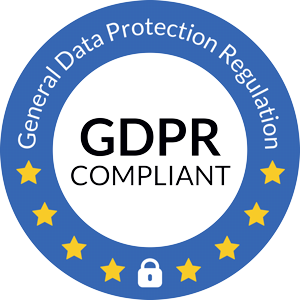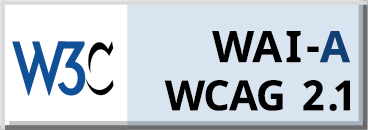The numbers don't lie: by 2028, 1 in 4 job candidates will be fake. Here's what every talent leader needs to know about the synthetic identity threat and how to protect your organization
Remote Hiring’s Hidden Risk: Are You Interviewing a Deepfake?
The phone rings. It’s your top engineering candidate, ready for the final interview. Their resume is flawless, their portfolio impressive, and the screening went smoothly. But something feels... off.
Welcome to the new reality of remote hiring, where synthetic candidates powered by AI can impersonate real people and pass rigorous interview processes.
The Alarming Rise of Synthetic Identity Fraud
Hiring Fraud Statistics That Should Concern You
-
25% of all job candidates will be fake by 2028 (Gartner)
-
17% of hiring managers have encountered deepfake candidates (Resume Genius)
-
$200 million in deepfake fraud losses in Q1 2025 alone
-
680% YoY increase in deepfake activity across industries
-
47% surge in synthetic identity fraud in 2023, totaling $23 billion in losses
These aren't just numbers, they signal a shift in how fraud is committed. What began with exaggerated resumes has evolved into advanced impersonation powered by AI and deepfake technology.
From Embellishment to Impersonation: The Evolution of Hiring Fraud
Traditional Hiring Fraud
-
Fake degrees or certifications
-
Inflated job titles and roles
-
Fabricated work histories
-
Identity theft
Synthetic Identity Fraud Today
-
AI-generated personas with fake faces and voices
-
Real-time deepfake overlays in live interviews
-
Voice cloning tools to mimic others
-
Infiltration into Fortune 500 roles and critical IT infrastructure
How Deepfake Candidates Are Created (And Why It's So Easy)
To generate a synthetic candidate, fraudsters need only:
-
A static photo or short video
-
A brief voice sample
-
Common AI tools for video and audio deepfakes
The result? A highly convincing imposter capable of passing your ATS, HR screening, and even final technical interviews, without existing in the real world.
Real-World Consequences of Synthetic Hiring Fraud
A National Security Concern
In May 2024, the U.S. Department of Justice revealed that 300+ companies had unknowingly hired North Korean imposters in remote IT roles, channeling $6.8 million to sanctioned entities.
“When fake candidates from sanctioned nations get hired, it becomes a national security issue,” explains Aarti Samani, AI fraud prevention expert.
A Trust Deficit for Real Candidates
False positives are rising. According to security analyst Roger Grimes:
“You could be a legitimate candidate, but if recruiters are unsure whether you’re real, you may not even get a callback.”
This erodes trust, damages employer brand, and discourages legitimate applicants.
How to Identify Synthetic Candidates: 4 Key Red Flags
1. Audio-Visual Inconsistencies
-
Mismatched lip sync and voice
-
High-quality video with low-quality audio
-
Robotic or unnatural speech patterns
2. Visual Anomalies
-
Unusual blinking or static eye movement
-
Flickering or glowing edges on face
-
Inconsistent lighting or shadows
3. Behavioral Red Flags
-
Stiff body language and minimal movement
-
Reluctance to turn head or interact naturally
-
Avoiding identity verification on video
4. Technical Disruptions
-
Unstable connection patterns
-
Excuses for not using supported platforms
-
“Camera malfunction” claims at critical moments
How Talview Stops Synthetic Identity Fraud: A Multi-Layered Approach
At Talview, we’ve built an AI-powered hiring fraud prevention platform that secures remote hiring from synthetic identity threats.
1. Advanced AI Detection
-
Frame-by-frame anomaly detection
-
Lip-sync accuracy testing
-
Facial consistency mapping
-
Behavioral movement analysis
2. 360° Environment Scanning
-
Room scans for unauthorized devices or people
-
Consistency checks for lighting and environment
-
Detection of background coaching
3. Multi-Modal Voice Authentication
-
Identification of cloned voices or modulations
-
Detection of synthetic artifacts in audio
-
Real-time voice verification
4. Robust Identity Verification
-
AI-driven facial recognition
-
Government-issued ID validation
-
Biometric and behavioral matching
5. Dual-Camera Setup
-
Alternative camera angles
-
Confirmation of physical presence
-
Detection of concealed devices or assistance
6. Lockdown Browser Security
-
Disables AI tools, copy-paste, and screen sharing
-
Blocks suspicious apps and tabs
-
Monitors for unauthorized activity
Why Investing in Hiring Fraud Prevention Makes Business Sense
The Cost of Inaction
-
$240,000+ per bad hire (including onboarding, salary, lost productivity)
-
Delayed detection of fraud—sometimes after several months
-
Legal and compliance risks from hiring unverified individuals
-
Employer brand damage and candidate churn
The ROI of Prevention
-
Faster, more secure hiring decisions
-
Reduced recruitment costs from fewer fraudulent candidates
-
Increased trust from job seekers and stakeholders
-
Compliance-ready systems that reduce legal exposure
Getting Started: Your Implementation Roadmap
Phase 1: Assessment (Weeks 1–2)
-
Evaluate hiring vulnerabilities
-
Map out risk levels by department
-
Train hiring managers on fraud red flags
Phase 2: Technology Setup (Weeks 3–4)
-
Deploy AI detection and verification tools
-
Activate multi-factor authentication
-
Enable real-time monitoring features
Phase 3: Process Optimization (Weeks 5–6)
-
Fine-tune fraud detection thresholds
-
Streamline candidate journey
-
Create incident response protocols
Phase 4: Continuous Improvement (Ongoing)
-
Monitor new threats and update systems
-
Review KPIs and platform effectiveness
-
Deliver ongoing fraud training to teams
Future-Proofing Talent Acquisition
Synthetic identity fraud is evolving—and so should your defenses. Organizations that act early will:
-
Stay compliant
-
Improve hiring accuracy
-
Enhance candidate trust
-
Reduce costs
-
Protect national and business interests
Final Thoughts: Act Before It's Too Late
With 1 in 4 job candidates expected to be synthetic by 2028, the threat is real and it’s already here. The time to act is now. Protect your brand, your teams, and your future by investing in smart, AI-powered fraud detection.
Ready to Safeguard Your Hiring?
Contact Talview to learn how our end-to-end fraud prevention platform can help you verify real talent, build trust, and avoid costly hiring mistakes.







Leave a Reply